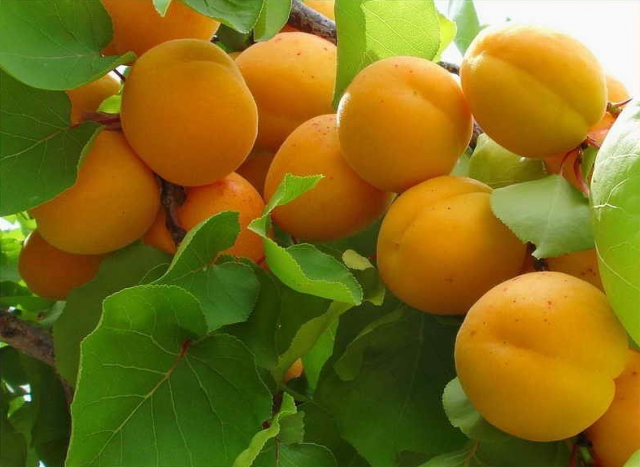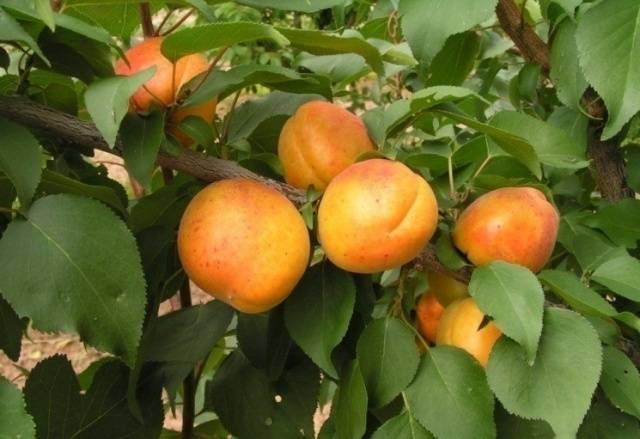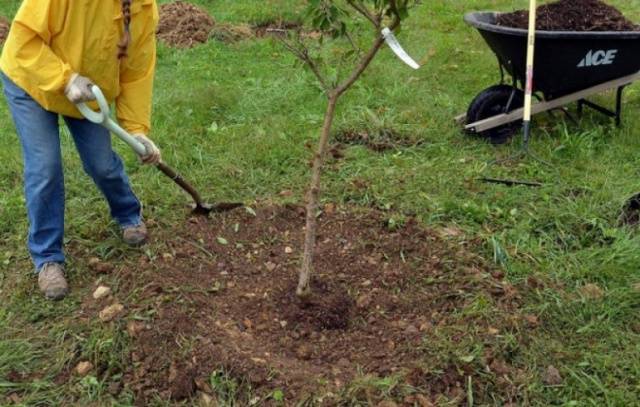Content
Apricot Rattle is a well-known winter-hardy variety, bred in the 20th century. It is appreciated for its self-fertility, consistent yield and good taste.
Breeding history
The originator of the Pogremok variety was the Rossoshansk fruit and berry station located in the Voronezh region. The institution has been engaged in breeding work since 1937. Over the entire period of its existence, the station has obtained more than 60 varieties of berry, fruit and ornamental crops (apricots, apple trees, plums, etc.). Many of them are successfully grown in the North Caucasus, in the Central and Lower Volga regions.
The founder of the station was Mikhail Mikhailovich Ulyanishchev, who had been engaged in breeding since the 1920s. His goal was to develop new varieties of apricots that could withstand the conditions of the middle lane. After the cold winter of 1927-28, M.M. Ulyanishchev was able to select two frost-resistant seedlings. The fruits collected from them were used to obtain new hybrids, including the Rattle variety.
When working on Apricot Rattle, the Bulgarian hybrid Silistrensky and the domestic variety Krepky were used. The Rattle got its name due to the free arrangement of the bone. If you shake the fruit, then you can hear the sound of the bone, like in a rattle.
Description of culture
Apricot variety Rattle is a vigorous tree with a sparse crown of a spherical shape. The size of the tree at the apricot Rattle is about 3-4 m.
Characteristics of Apricot Rattle:
- average weight 45-50 g, on young trees - up to 80 g;
- rounded, laterally flattened shape;
- pale orange color without blush;
- strong pubescence;
- orange dense pulp;
- the bone is located freely in a large cavity.
The fruits have a sweet and sour taste. Tasting score - 4 points. Fruits tolerate transportation and long-term storage well.
Variety Rattle is recommended for cultivation in the south and in the middle lane. When planted in colder regions, the harvest time is shifted by 7-10 days.
Photo of apricot Rattle:
Characteristics
When choosing an apricot variety, its yield, self-fertility, drought, frost and disease resistance are taken into account.
Drought resistance, winter hardiness
Apricot Rattle is characterized by high winter hardiness of both the tree itself and the flower buds. The tree is drought tolerant and able to tolerate lack of moisture.
Pollination, flowering period and ripening times
The Rattle variety is partially self-fertile. To obtain a high yield, it is recommended to plant a pollinator next to it. Flowering begins in May.
Fruit ripening occurs in the middle late terms. Harvested in late July - early August.
Productivity, fruiting
Before buying a seedling, it is important to know in what year the rattle apricot bears fruit. The first crop is harvested 4-5 years after planting.
The Pogrebok variety brings a high yield. The fruits are best harvested immediately after ripening, before they crumble.
Scope of the fruit
The Rattle variety has a universal application. Its fruits are suitable for fresh consumption, making jam, jam, compote. According to reviews about the apricot Rattle, the fruit is best used to get dried apricots.
Disease and pest resistance
Apricot Rattle has an average resistance to diseases and pests. At high humidity on the leaves and fruits, signs of clasterosporium appear.
Advantages and disadvantages
Advantages of the rattle apricot variety:
- self-fertility;
- large fruits;
- stable yield;
- good taste;
- resistance to frost and drought.
Disadvantages of the Rattle variety:
- susceptibility to fungal diseases;
- takes a long time to bear fruit.
Landing features
Planting apricot rattle is performed in spring or autumn. A suitable place is chosen for the tree and a planting pit is prepared.
Recommended timing
In the southern regions, the culture is planted in mid or late October, after leaf fall. Then the seedling will take root before winter.
In northern areas, it is better to postpone work in the spring, when the snow melts and the soil warms up. Apricot Rattle in the suburbs and the middle lane can be planted both in spring and autumn. Before landing, they are guided by the weather conditions.
Choosing the right place
A place for growing an apricot must meet a number of conditions:
- flat area or hill;
- lack of strong winds;
- drained soil;
- natural light throughout the day.
The culture grows in light loamy soil. Acidic soils are limed before planting. Moisture should not accumulate on the site.
What crops can and cannot be planted next to an apricot
Apricot does not get along well next to fruit and berry crops. It is removed from apple, plum, cherry, hazel and raspberry trees at a distance of more than 4 m.
It is best to set aside a separate area for growing different varieties of apricot. Under the trees, you can plant spring flowers (primroses, tulips, daffodils) or shade-loving perennials.
Selection and preparation of planting material
Saplings of the Rattle variety are purchased in nurseries. For planting, plants with an open root system are selected and its condition is assessed. The seedlings should be free of damage, mold and other defects.
Immediately before planting, a chatterbox is prepared from water and clay, which has the consistency of sour cream. The roots of the seedling are dipped into the resulting mixture.
Landing algorithm
The order of planting varieties of apricot Rattle:
- At the chosen place, a hole is dug with a diameter of 60 cm and a depth of 70 cm.
- Compost, 1 kg of wood ash and 0.5 kg of superphosphate are added to the fertile soil.
- The soil mixture is poured into the pit and left for 2-3 weeks to shrink.
- The prepared seedling is lowered into the pit.
- The roots of the plant are covered with earth and water is plentiful.
Follow-up care of the culture
Growing an apricot Rattle involves constant tree care: watering, feeding, pruning. The culture does not need frequent watering. Moisture is brought in during the flowering period, if drought is established.
Top dressing of the Rattle variety is carried out in the spring after the snow melts. For the culture, a solution of mullein or ammonium nitrate is prepared. During flowering and ripening of fruits, the tree is fed with potassium-phosphorus fertilizers.
Shoot pruning stimulates the fruiting of the Rattle variety. The tree has 6-7 skeletal branches. Weak, broken and frozen shoots are eliminated.
For the winter, the apricot is watered abundantly and the roots are covered with humus. To protect against rodents, the tree trunk is covered with a special net.
Diseases and pests, methods of control and prevention
Common diseases of apricot:
| Type of disease | Signs | Control measures | Prophylaxis |
| Clasterosporium disease | Red spots on leaves, fruits and bark, cracks in the trunk. | Spraying with Horus solution or Abiga Peak. |
|
| Curliness | Blister-like red spots on the leaves. Deformation of shoots, death of fruits and leaves. | Removal of diseased leaves. Spraying with copper products. |
The most dangerous crop pests:
| Pest | Signs of defeat | Control measures | Prophylaxis |
| Aphid | Twisted leaves at the tops of the shoots. | Spraying with tobacco solution or Actellic insecticide. |
|
| Hawthorn butterfly caterpillar | The caterpillar damages the buds and leaves of the apricot. | Pests are collected by hand. The plantings are sprayed with a solution of wood ash. |
Conclusion
Apricot Rattle is a decent variety, fruitful and frost-resistant. The key to a good harvest is regular tree care.












